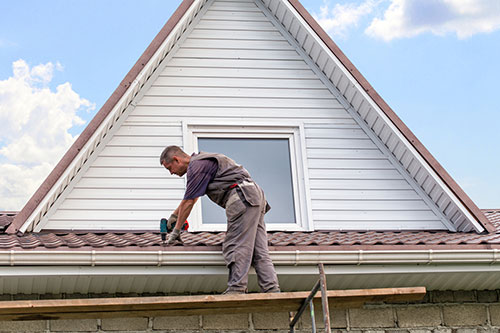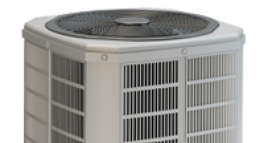During the summer, attics can get very hot very quickly. Here are some fundamental attic cleaning and prep tips to keep your home comfortable and your utility bills under control.
Check the Ventilation
In the summer, attic temperatures can skyrocket. If you don’t have adequate ventilation, a good portion of this heat will radiate into your living space.
A well-ventilated attic can keep utility bills down by expelling warm air and refreshing it with cooler outside air. It’s generally best to have about one square foot of ventilation opening for every 150 square feet of ceiling space. Look to see if your eave soffits are open, and consider adding gable fans, ridge venting, or solar powered roof venting if your ventilation is limited to gable vents.
Look for Leaks
Even the tiniest roof leaks can quietly damage insulation, while promoting mildew and mold growth. Attic leaks can be somewhat difficult to identify. You can start by looking for signs of wet insulation. You should also watch for whitish water stains on the roof decking and along rafters near the chimney openings, vents, and valleys.
Did you know that 2-10 Home Buyers Warranty (2-10) can help you address roof leaks over your living area? Get a quote to see how we can help.
Watch Out for Pests
When inspecting your attic for leaks, you should also watch for feathers, animal droppings, and plant matter. Rats, mice, bats, birds, raccoons, squirrels, and possums often carry parasites and pathogens in their feces, urine, and saliva. Additionally, bees, wasps, and hornets may take residence. In addition to the threat of stinging, the weight of some hives can do major structural damage in the worst cases.
If you see any signs that any of these critters has made its way into your attic, contact your local animal control office. After the animal is removed, you will want to have the insulation replaced. You may also want to add hardware cloth over vents and soffiting to seal off your attic.
Add a Radiant Heat Barrier
You can lower the temperature in your attic by as much as 20° Fahrenheit by adding a radiant heat barrier, which reflects more than 90% of heat that would normally radiate through your roof.
Seal Air Leaks
Air can move through gaps in wall joints and holes for plumbing and wire. If you notice any of these in your attic, seal them using an expanding caulk or foam. Just make sure to do this before you add new insulation, since you will have difficulty seeing them afterward.
Add Insulation
Where you live will determine how much insulation you should consider added to your attic. Use Energy STAR’s insulation recommendation rundown here.
In general, the more insulation you have, the cooler your home will stay in the summer. It’s important to remember that you don’t have to insulate everything at once. Simply start in the center of the attic. Add more when you can, moving toward the edges of the room. You should notice a difference in comfort and utility charges the moment you get started.
In the southern part of the country, attics often house a home’s ductwork, air handling system, and water heater. If this is the case in your home, make sure to flush your water heater to eliminate sediment from the bottom of the tank. You should also have your A/C system or heat pump condensing coil inspected for dust and dirt. Make sure to inspect your ductwork for breaks and loose connections. If you notice any, be sure to seal them with aluminum tape.









